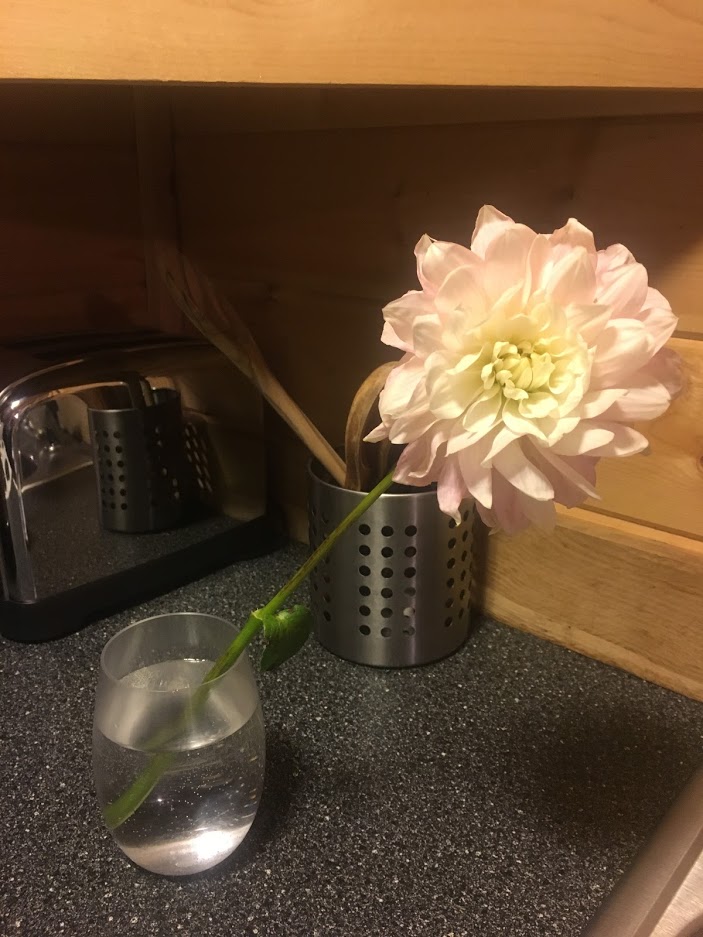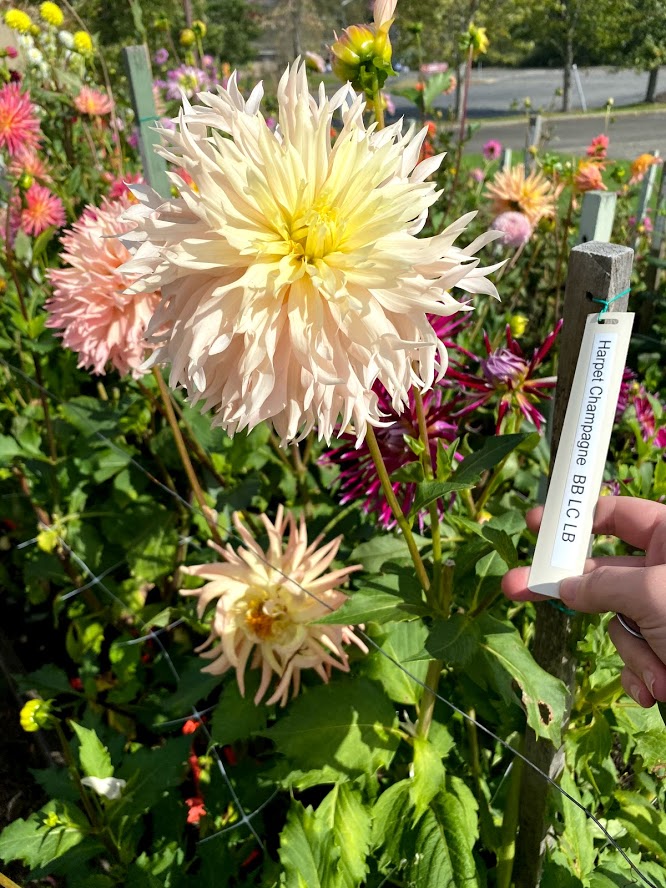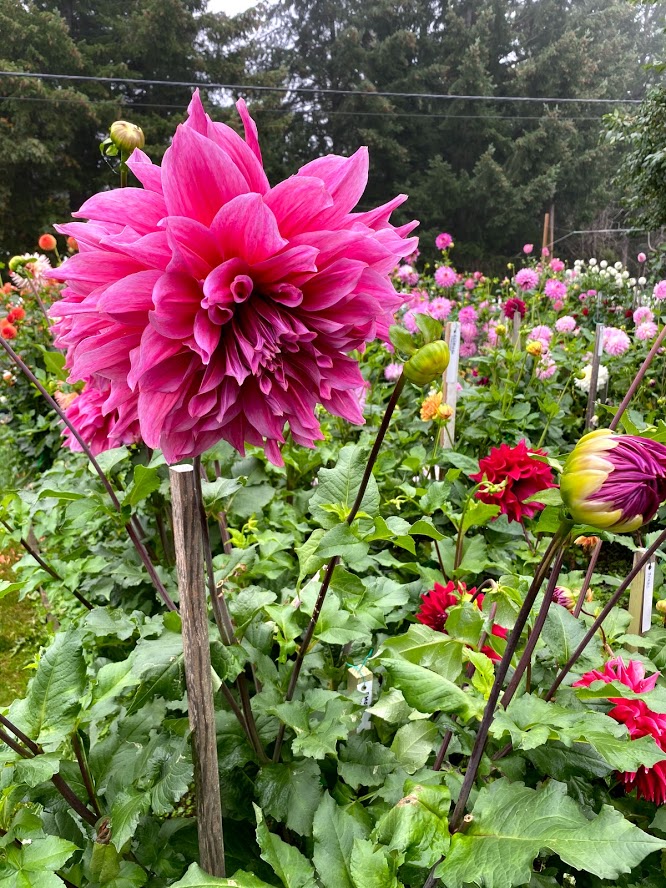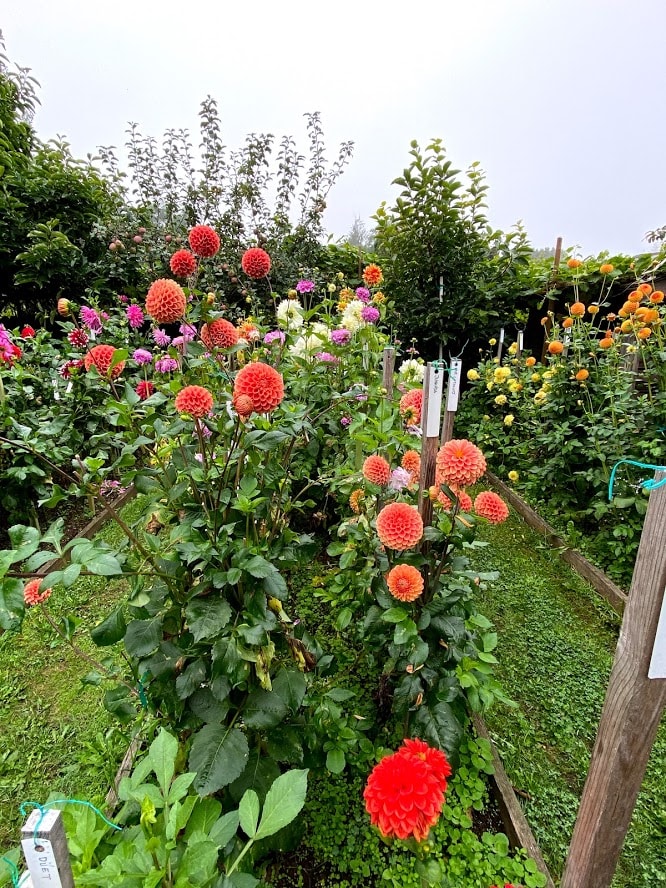Dahlias are famous throughout the Pacific Northwest. This huge, showy flowers bring bold color to the scenery. Even post offices boast huge plots, sponsored by the local Dahlia society.
Growing these big, show stopping blooms has to be hard, right?
Pike Place Market’s Flowers
The first dahlia I ever remembered seeing was in the Pike Place market. These lovely, soft pink, and white flowers cause my eye. There was such a huge variety that at the time I didn’t even know I was looking at the same type of flower. Yellows, reds, pinks, and oranges painted a picture with petals that could curl, stand out like pompoms, or mimic sunflowers. In fact, dahlias are related to zinnias, daisies, and sunflowers.

Phillip bought me my favorite flower, just one since we were traveling. I put it in a glass at our weekend rental. Ever since then, I’ve had my eye out on them.

Growing your Own Dahlias
I assumed that since dahlias got so big and colorful, they must be hard to grow. However, I’ve now encountered home gardeners that sell or give away tubers because they’re just so prolific. Here’s what I’ve learned:
- Dahlias are tubers that prefer dry, well draining soil. The tubers can rot if the soil gets and stays too wet. To grow them in the Pacific Northwest, just make sure that you amend the native, sandy soil with some garden soil or compost, mixing the soils well.
- Don’t let your plants freeze. After the summer is over and the plants start to die back, cut them down to the ground and cover with a good mulch. As long as they don’t freeze, they’ll come back as soon as the soil warms back up.
- Avoid high nitrogen fertilizer. Nitrogen promotes healthy leaves, and is good for foliage, lawns, and other ornamental plants. Fertilizers are typically labeled with their NPK (or nitrogen, phosphorus, and potassium rating). The phosphorus and potassium will help the plants grow big, showy, colorful flowers. High nitrogen will promote lush, green plants, but you may not get as many flowers.
- Support the stalks. The dahlia flowers can get so big and heavy the weight can snap the stalks. You can support multiple plants with a grid of twine, about 2-4′ from the ground, depending on how tall your plants are. Or, support single plants with a tall stake and gardening tape.
You just need to plant your plants or tubers in the ground, fertilize in the spring, cut back in the fall. Once every three years or so, you can dig up the tubers to separate them. The tubers will keep growing and multiplying, so you may end up with more dahlias than you know what to do with!
The American Dahlia Society is a great source for finding varieties, growing your own fantastic blooms, and connecting with other members.



